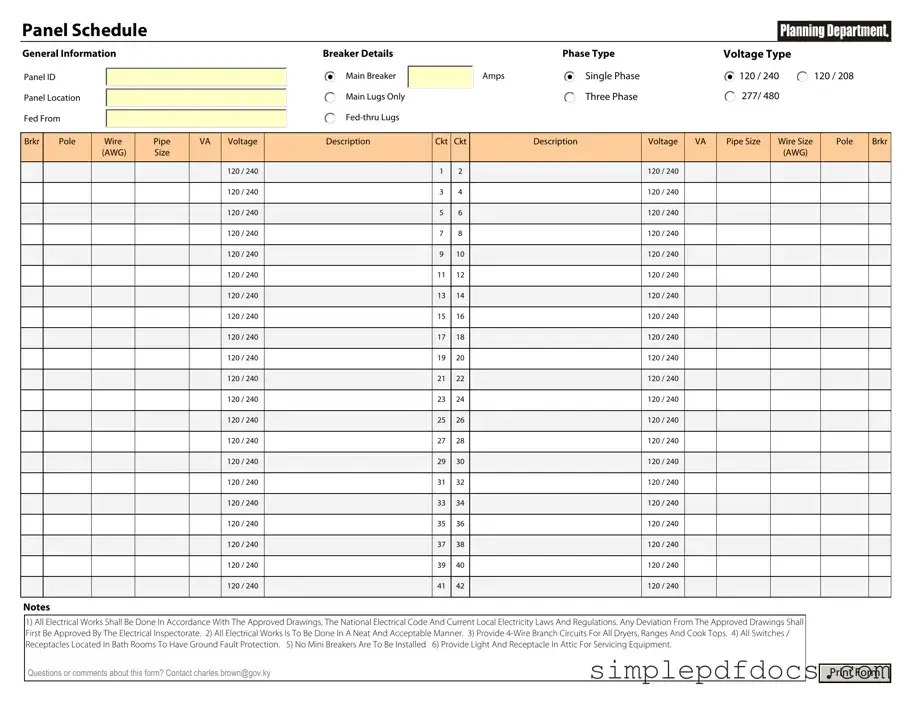Fill Your Electrical Panel Schedule Form
The Electrical Panel Schedule form is a crucial document that outlines the distribution of electrical circuits within a building's electrical panel. This form provides essential information about circuit breakers, their corresponding loads, and the overall organization of the electrical system. Understanding and properly completing this form ensures safety and efficiency in electrical management.
Get Document Here
